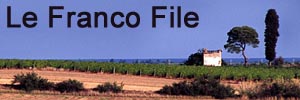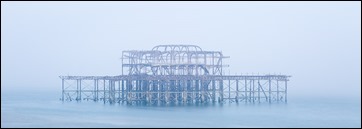The last stage of our return journey to the UK having successfully and mostly very enjoyably escaped the worst of the British winter, turned into something of a nightmare.
At our northbound overnight stop at the Parador in Calahorra, I received text messages from Brittany Ferries telling me that the departure of our return sailing would be delayed due to adverse weather conditions. The adverse weather conditions were being caused by Storm Felix which was smacking into Portugal and Spain, before making its way onto the west coast of France. Astute readers will realize that between these two geographic locations lies the Bay of Biscay, complete with its reputation for roughness. I had experience some degree of the Bay’s potentially disturbed nature when I had once made the return trip solo, Francine having had to curtail her Spanish visit and having had to fly back for a family emergency. [See 2015 Autumn] Being a poor sailor, I was concerned but chatting with fellow passengers distracted me and got me through it unscathed, along with medication, of course. There had never been any suggestion of a weather delay on that occasion, so clearly Storm Felix promised to up the stakes.
First, a little orientation. The route between Santander and Portsmouth, on Brittany Ferries cruise-type service using more modern boats takes about 24 hours. We were booked onto the so-called Economy sailings, partly because it’s cheaper but mainly because it omits a few services that we wouldn’t use anyway. The Economy sailings are on an older, slower boat (Baie de Seine) and the journey typically takes 27-28 hours.
Our timetabled departure time was 17:15 on Sunday 12th March. The delay notification said that we would be boarding at the regular time (about 16:00) and that the ships’ doors would be closed at 17:15 but that we would not be departing “until the early hours of Monday morning”. Bother, but at least we’d have a cabin and not need another hotel.
We dawdled our way along our 3-hour route from Calahorra to Santander, calling in at Logrono to find the so-called elephant trail, a short walking route taking in numerous tapas bars, each stop, of course, requiring another drink. Well, it’s rude not to. The rolling gait of those who have over-indulged gives the trail its name. (Not us ‘cos it was Sunday and we were driving.)
We arrived in Santander at the perfect time, according to my personal travel manual, at 15:00. [Sunday] After a slightly longer wait than anticipated, possibly because the boat we still discharging the inbound cohorts, we boarded and got used to the feel of our cabin, a 3-berth outside cabin on the lowest accommodation deck, deck 6. Knowing we weren’t going anywhere fast, we set about reading and doing puzzles. There were certainly whitecaps in the harbour and flags were flapping vigorously but being moored, the boat was rock solid. We had our picnic supper and eventually retired.
Clanking sounds, throbbing of marine engines and movements awoke Francine at about 04:00 [Monday]. We gulped our first pair of Stugeron tablets each and settled back down. We made our way calmly out of harbour and into the notorious Bay of Biscay. Amazingly, we successfully returned to the land of nod and got a bit more sleep.
Sleep didn’t last long. Once awake, the ship was rolling distressingly from side to side. Each roll to starboard was severe enough to cause me to slide a few inches down my bed towards the footboard. As the ship rolled back again to port, I slipped back again to where I should be, on the pillow – down, back, down, back, and so it went on. The curtains covering our porthole, folloo the inimitable Mr. Newton’s Law of Gravity, swung out above our heads to about 25°. Being unable to swing in the opposite direction because of the cabin walls, they returned to apparent vertical, although the cabin wall, our reference point, was, of course, itself now at –25°. The movement was not regular, though it was constant. There would be periods of more modest rolling followed by an abrupt change to a more serious rolling. At one point, the hefty wooden cabin stool tumbled end over end towards our cabin door, stopping on its side just short of the door. We left it there out of harms way. The stool having been moved out of the way, our travelling electric cool box was next to totter over, or would have been had I not caught it before it hit the floor. Sudoku puzzle books were scattered across the floor. In seas this mountainous, there was never any thought of my attempting to solve any. Since I get sick just reading in a car, I was anxious not to do anything to endanger my already fragile equilibrium. Neither did Francine want to try to read her Kindle.
Conditions were much worse than on my voyage of two years earlier, so bad that this time the captain eventually ordered the shop and restaurant closed “pour les raisonnes de sécurité“ [for safety reasons]. It transpired that one woman had been thrown off her dining chair not once but twice. Quite why she thought dining might have been a good idea in such circumstances remains a mystery. We were also told to stay in our cabins and not attempt to move around the ship. Sound advice; even taking the two or three steps from our beds to our bathroom in the cabin was fraught with danger. At the risk of painting too colourful a picture, once in the bathroom it was necessary to cling to the counter top for stability whilst seated on the loo. “Tell you what, let’s not bother with a shower.” Since no food was now available to purchase, the crew delivered sandwiches and mineral water to every cabin, bless them.
It’s staggering how unsettling it is when nothing in ones world is stable. All fixed orientation points disappear, hence seasickness I suppose. I found either closed eyes or fixing ones gaze on the ceiling to be about the best approaches. Our discomfort continued unabated throughout the daylight hours of Monday and into the early evening, the time it took us to travel the length of the Bay of Biscay. The usual route out of the Bay and into the English Channel is a passage between a collection of islands off Brest at the western extreme of Brittany. The ships slow down to navigate the narrow channel between the islands with care. In these conditions, the captain clearly thought that was too dangerous and sensibly took a longer route further to the west of the rocky islands, a route which, I think, added a couple of hours to our already long journey time. By the time we finally turned east into the mercifully calmer English Channel, we had been battered, shaken and stirred for a total of 17 hours by the unrelenting sea. The only high point, other than the caps of the waves, was that we both managed to hang on to our cookies, thanks to Stugeron at 8-hour intervals.
The Channel was essentially flat. I couldn’t help but wonder at the transformation of the sea state in such a short distance but I was then very relieved to be able to spend my second night in bed without constantly sliding up and down for the remaining 13 hours before we would finally dock in Portsmouth at 09:00 on Tuesday. It’s further along the English Channel than one might imagine.
Our original estimated arrival time had been 06:30. We had spent an unpleasant 41 hours on board, 39 of which I had spent in the confines of my cabin. I was glad to be back on terra firma. A somewhat unwelcome end to an otherwise wonderful Christmas and winter escape.
The crew was looking forward to a similarly rough return journey back down the Bay of Biscay.




























Recent Comments